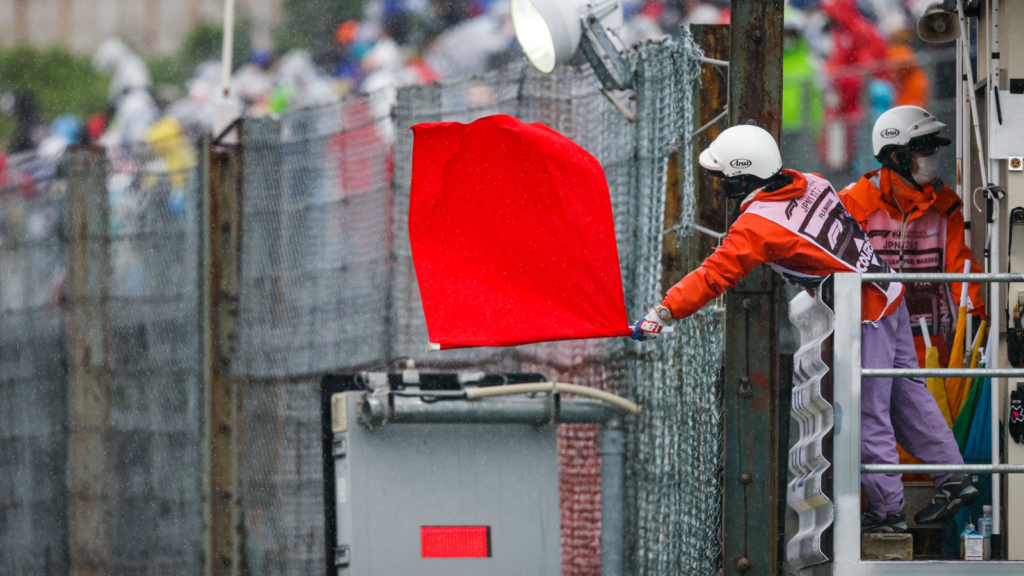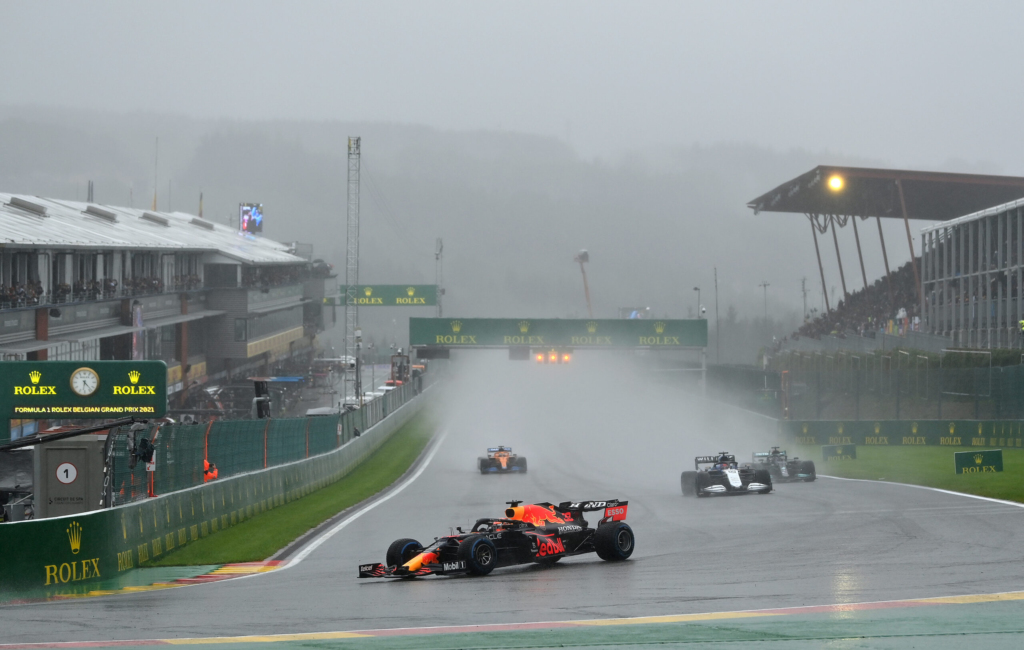A Formula 1 Grand Prix typically spans about 305 kilometers (190 miles) and lasts between 1.5 and 2 hours under normal conditions. Each race is carefully designed to balance the thrill of speed with strategic endurance. The exception is Monaco, where the race distance is shorter (161.772 miles) due to its compact, challenging layout.
How Many Laps are In An F1 Race?
The number of laps in an F1 race depends on the length of the circuit and the race distances mandated by the FIA. Shorter tracks require more laps to reach the 305-kilometer threshold, while longer tracks require fewer. For example, Monaco has 78 laps because of its shorter layout, while Spa in Belgium, one of the longest circuits, only requires 44 laps.
F1 Grand Prix Format
The F1 Grand Prix format is a meticulously planned three-day event, typically spanning from Friday to Sunday. The excitement kicks off on Friday with two free practice sessions, allowing teams to fine-tune their cars and drivers to familiarize themselves with the circuit. Saturday is split into a morning practice session and an afternoon qualifying session, where drivers compete for the best starting positions on the grid. The climax of the weekend is the race itself, held on Sunday afternoon or evening, where all the preparation and strategy come to fruition.
Historically, the Monaco Grand Prix stood out by holding its practice sessions on Thursday instead of Friday, adding a unique twist to the schedule. However, recent changes have aligned Monaco with the standard format, ensuring a consistent experience across all Grand Prix weekends.
Laps and Distances of F1 Races
Here’s a detailed table presenting the laps and distances for each race in the 2024 F1 calendar:
| Grand Prix | Laps | Distance (miles) |
|---|---|---|
| Bahrain GP | 57 | 190.253 |
| Saudi Arabian GP | 50 | 191.662 |
| Australian GP | 58 | 190.217 |
| Japanese GP | 53 | 191.054 |
| Chinese GP | 56 | 189.700 |
| Miami GP | 57 | 191.584 |
| Emilia Romagna GP | 63 | 192.034 |
| Monaco GP | 78 | 161.772 |
| Canadian GP | 70 | 189.686 |
| Spanish GP | 66 | 190.908 |
| Austrian GP | 71 | 190.420 |
| British GP | 52 | 190.263 |
| Hungarian GP | 70 | 190.531 |
| Belgian GP | 44 | 191.415 |
| Dutch GP | 72 | 190.504 |
| Italian GP | 53 | 190.586 |
| Azerbaijan GP | 51 | 190.170 |
| Singapore GP | 62 | 190.228 |
| United States GP | 56 | 191.634 |
| Mexico GP | 71 | 189.738 |
| Brazilian GP | 71 | 190.064 |
| Las Vegas GP | 50 | 192.599 |
| Qatar GP | 57 | 191.762 |
| Abu Dhabi GP | 58 | 190.253 |
Despite the variation in the number of laps, all races are designed to be roughly the same length to ensure a consistent race experience for fans.
Sprint Races: Shorter, Faster, and Intense
Sprint races add another layer of excitement to select weekends. These shorter events cover about 100 kilometers (62 miles) and typically last around 30 minutes. Unlike Grand Prix races, sprint events are designed to deliver fast-paced action in a condensed timeframe.
In addition to sprint races, some weekends feature sprint qualifying, a new format that determines the starting grid for the sprint race.
Sprint weekends for 2024 include:
- China
- Miami
- Austria
- Austin (USA)
- Brazil
- Qatar
The number of laps in a sprint race depends on the circuit’s length. Short tracks, like Austria, include more laps, while longer circuits, like Austin, feature fewer laps.
Safety Car and Race Interruptions
Safety cars and race interruptions are critical elements that can significantly impact the length and dynamics of an F1 race. When a safety car is deployed, the race pace slows down, and drivers must follow the safety car until the track is cleared of any hazards. This bunches up the field, leading to strategic opportunities and intense battles once the race resumes. In more severe cases, a red flag may be issued, and the marshals wave it all around the track stopping the race entirely and requiring drivers to return to the pit lane. Such interruptions can be due to heavy rain, serious accidents, or other safety concerns. These measures ensure the safety of drivers and officials while adding an unpredictable element to the race.

F1 Track Variations
F1 tracks are as diverse as the countries they are located in, each offering unique challenges and characteristics. The shortest circuit on the calendar is Monaco, with a length of just 2.074 miles (3.34 kilometers), demanding precision and skill through its narrow streets. On the other end of the spectrum is Spa-Francorchamps in Belgium, the longest circuit at 4.352 miles (7.00 kilometers), known for its sweeping corners and elevation changes. The number of laps varies accordingly, with Monaco featuring the most laps at 78, while Spa has the fewest at 44. This variety ensures that each race presents a distinct test of driver skill and team strategy.
How Long Does an F1 Race Last?
An F1 race generally finishes within 90 to 120 minutes, though the maximum race length is capped at two hours. Factors like weather conditions, safety car interruptions, or red flags can extend the total event duration to three hours.
High-speed circuits like Monza allow for shorter race times due to faster lap speeds. The 2024 Italian Grand Prix lasted only 1 hour and 14 minutes! On the other hand, there are street circuits such as Singapore that often approach the time limit because of slower lap speeds. In 2024, Lando Norris won the Singapore Grand Prix, which he completed in over 1 hour 40 minutes.
What Makes Monaco Grand Prix Stand Out?
Monaco’s uniqueness lies in its short distance and high lap count. The circuit’s narrow streets, sharp corners, and minimal overtaking opportunities create a race where precision and strategy are vital. Although it covers just 161.772 miles, the 78 laps around the iconic streets of Monte Carlo make it one of the most intense and entertaining races of the season. The Monaco Grand Prix is a highlight of the F1 race weekend, offering a unique challenge for drivers and teams.
Longest and Shortest F1 Races
The history is filled with memorable races, some of which stand out for their extraordinary lengths. The longest F1 race on record is the 2011 Canadian Grand Prix, which lasted an astonishing 4 hours, 4 minutes, and 39 seconds due to multiple interruptions and changing weather conditions. In stark contrast, the shortest race was the 2021 Belgian Grand Prix, which lasted a mere 3 minutes and 27.071 seconds, primarily due to heavy rain that made racing conditions unsafe. To prevent excessively long races, the FIA has since reduced the maximum duration of a Grand Prix from 4 hours to 3 hours, ensuring a more predictable and viewer-friendly experience.

Strategic Challenges of Race Lengths
Every Grand Prix requires teams to balance speed, tire wear, and fuel consumption. Circuits like Austria, with more laps, require teams to strategize for frequent overtaking opportunities and tighter gaps between cars. Longer tracks, such as Spa, emphasize maintaining consistent performance over fewer laps.
Safety car periods can significantly impact race strategy, as they bunch up the field and create opportunities for overtaking once the race resumes. The variety of tracks tests the adaptability of drivers and teams, ensuring no two races are the same.
How F1 Race Lengths Engage Fans
The varying lengths and lap counts of F1 races add layers of unpredictability and excitement for fans. A short, fast circuit like Monza keeps viewers on edge with its relentless pace, while longer tracks like Spa offer breathtaking scenery and dramatic moments. Sprint races further amplify the action, delivering quick and intense battles for position. The one hour practice sessions held on Fridays are crucial for teams to refine their car setups and prepare for the race.
No matter the track or format, a sudden change of weather will not only result in slower lap times, but very often will lead to Safety Cars or even a Red Flag. As a result, even the fastest circuits can be hosts of long and slow races. But this is why we love F1 so much! It can visit the same venue in 5 years, and serve us 5 completely different races, with different winners and challenges.
My Remarks
Some races are so full of emotions, that we wish they lasted for another 30 laps, while in other races we pray for a Safety Car, to stirr things up and add some emotions. Although all F1 races have the similar distance and duration, some of them are like a breeze, and before we realise, they are over, while the other feels like a procession (Monaco, I’m talking about you). For a true fan, the length of an F1 race won’t be as important, as the emotions delivered throughout that time.

